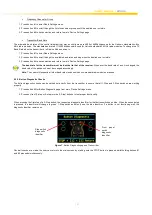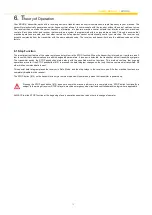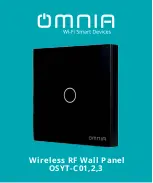
USE
R’S MANUAL |
ERGO-S
26
Appendix B
B.1 Operator Safety Basics
Before starting your shift, you should make sure that the equipment has a current inspection certificate and that the necessa ry inspections
and risk assessment checks have been carried out and are up to date. Also, the equipment must be operated in accordance with the
manufacturer’s instructions.
Furthermore, it is of utmost importance that you know that
YOU are primarily responsible for YOUR OWN health and safety
. Wear
appropriate Personal Protective Equipment and make sure that you have had all the necessary training to operate the equipment. The
following basic safety precautions must be adhered to at all times:
1. Transmitter switches must never be mechanically blocked ON or OFF for any motion. When not in use the transmitter must be
turned off. A safe and secure storage space should be provided for the transmitter unit and the unit should always be placed there
when not in use. This precaution will prevent unauthorized people from operating the crane. Receivers must be removed from the
equipment when it is unlikely that it will be used for a period of time, and properly stored.
2. All defective or missing safety equipment, mechanical or electrical defects must be reported to the supervisor without del ay.
Operation must not continue until all required repairs are completed. Any changes to the condition of the remote or equipment must
be recorded and communicated to or made accessible by the following operators on shift.
3. Ensure that there is nobody in the path of the travel of the equipment. If there is, stop and sound the alarm before proceeding.
4. When leaving the equipment area for any reason, switch off the transmitter, remove the USB Key and store it in a safe and secure
place to prevent unauthorized operation.
5. Do not allow any unauthorized person to operate the transmitter at any point.
6. Do not operate the transmitter at a distance where the equipment and all surrounding objects are not visible. Make sure th at your
view is not obstructed.
7. Do not attempt to override any of the safety features built into the Radio Remote Control.
8. Put rechargeable batteries on charge at the end of each shift.
9. Use protective gloves when surface temperature of unit exceeds 58°C (136°F) as per IEC 62368-1:2014.
B.2 Safety Checklist
The following checklist provides general safety guidelines for radio control operation of equipment by fully qualified and traine d operators.
These recommendations do not take precedence over any of the following requirements relating to cranes, hoists, lifting devices or other
equipment which use or include Hetronic products:
▪
Instructions, manuals, and safety warnings of the manufacturers of the equipment where Hetronic products are used,
▪
Plant safety rules and procedures of the employers and the owners of the facilities where the Hetronic products are being
used,
▪
Occupational Health and Safety Administration (OSHA) regulations,
▪
Safety standards and practices for the industries in which Hetronic products are used.
Transmitter Start-up and Safety Checklist
1
Are batteries fully charged?
2
Are all switch labels clear and legible?
3
Is the transmitter free from cracks and damages?
4
Are the battery enclosures free from cracks and damages?
5
Is the STOP function working as it should be?
6
Is the correct USB Key being used?
7
Has each function of the transmitter been tested independently to ensure the equipment is responding
correctly?
8
Is the TFT free from cracks, deep scratches and damages?
9
Is there any debris inside the USB port which will prevent the USB Key from being inserted /functioning
properly?
10
Are the Status LEDs on the transmitter clearly visible?
11
Are the charger and plug in good working condition?
12
Is the cable control cable (where applicable) free from kinks and damages?




































